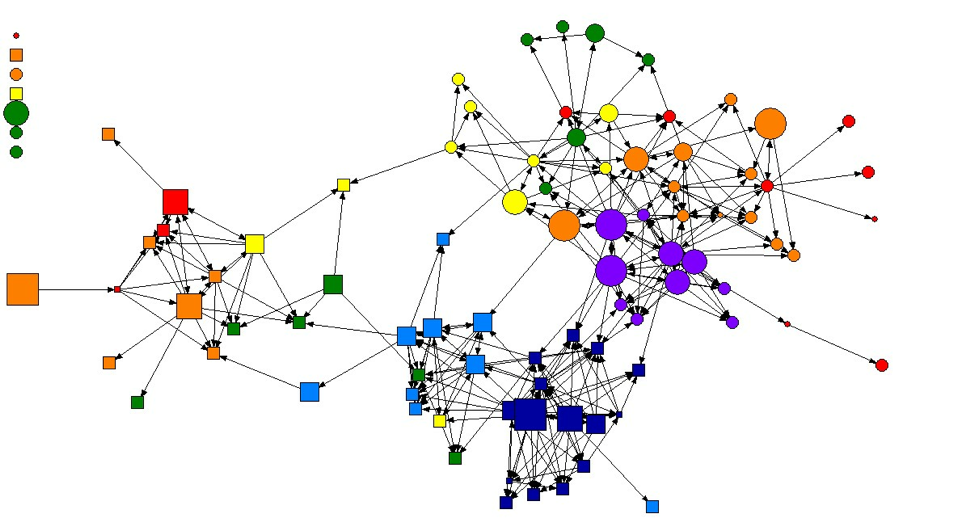My name is Rebecca Swann-Jackson, a Senior Research Associate at the Center for Research and Evaluation on Education and Human Services at Montclair State University. I currently manage evaluation projects focused on teacher preparation and development, and educational programs and community-based initiatives serving urban children and families. In the evaluation of an urban teacher residency program, I recently used social network analysis (SNA) to examine the relationship between support for novice teachers and retention (i.e., staying in their schools and/or the profession).
Social network analysis is an innovative method used to understand relationships. As relational models, networks show both structure (who and what) and process (how and why) at the same time. Further, you can obtain a more complete picture by combining quantitative (outsider view) and qualitative measures (insider view) of the structure and process.
Hot Tips: These tips are especially relevant for those who want to try out mixing quantitative SNA with qualitative methods.
The network survey will help to construct the ‘who and what’ relational network. To use the network for evaluation purposes, you also might consider using qualitative methods to investigate ‘how and why’ wonderings. Interrogate, or question, your models; what do you want to know? Ask questions of the relationships and connections you see (and don’t see!).
In the case of the evaluation of the urban teacher residency program, I was curious about:
- How does each supporter do their job?
- Why do novice teachers reach out to these people for support?
- Why do novice teachers reach out to these people for these specific types support?
Tip 1: Have a data party to engage respondents in interpretation and questioning: Reconvene your survey respondents. Distribute copies of the network model with the identifiers removed. Have them identify the questions they have about the model. Ask participants which node they think represents them and ask them to explain their decision-making.
Tip 2: Investigate questions through qualitative inquiry with key nodes. In my evaluation, I used focus groups to further understand the nature of key nodes’ roles. I interviewed the key nodes to learn more about their day-to-day operations.
Lessons Learned: Combining SNA with qualitative methods provided a more holistic understanding of the relationship between support and retention. Learning how people perceived the network and the content and meaning of ties between individuals was essential to understanding network patterns as well as evaluating program implementation and outcomes.
Rad Resources:
Nvivo by QSR – Enabling Qualitative Social Network Analysis https://youtu.be/8cUBQSWgGqg
Robert Wood Johnson Foundation – Using Social Network Analysis in Evaluation https://www.rwjf.org/en/library/research/2013/12/using-social-network-analysis-in-evaluation.html
The American Evaluation Association is celebrating Social Network Analysis TIG Week with our colleagues in the Social Network Analysis Topical Interest Group. The contributions all this week to aea365 come from our SNA TIG members. Do you have questions, concerns, kudos, or content to extend this aea365 contribution? Please add them in the comments section for this post on the aea365 webpage so that we may enrich our community of practice. Would you like to submit an aea365 Tip? Please send a note of interest to aea365@eval.org. aea365 is sponsored by the American Evaluation Association and provides a Tip-a-Day by and for evaluators.

